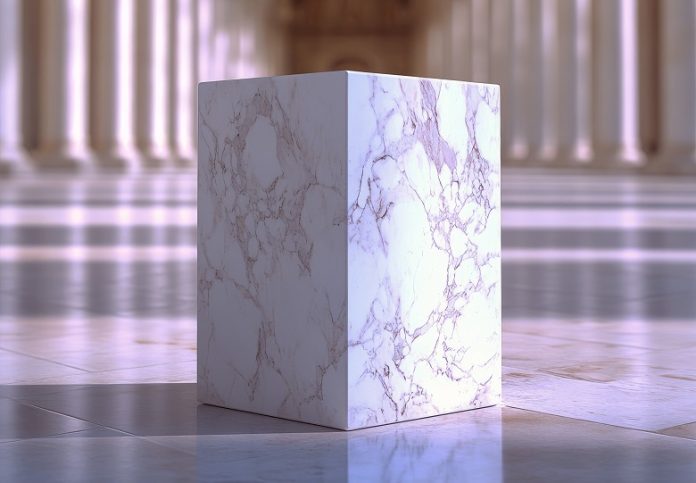Marble, with its unparalleled durability and range of tones, stands as a timeless material in architecture. The subtle marks left by time and the characteristic patina that covers its surface tell stories of solemnity and grandeur, connecting the present to history and our origins. This esteemed material, sought after since ancient times, has captivated not only sculptors but also architects across the globe for millennia. Beyond its historical significance, marble’s use also supports a crucial contemporary issue: sustainability. Choosing a building element that endures for decades without replacement is undeniably beneficial for our planet.
Marble in Construction
Celebrated for its beauty and refinement, marble has a long and distinguished history in architecture and building construction. Its use for millennia underscores its value as a precious and versatile building material. Since the times of ancient Greece and Rome, marble has been employed to construct magnificent buildings, temples, and statues. This limestone, formed through the metamorphosis of calcite, offers a wide array of colors and veining patterns that make it unique and aesthetically pleasing. Marble is prized for its ability to be cut into thin slabs without compromising its strength, making it ideal for flooring, wall cladding, and sculptural works. The high quality of marble makes it a material of choice for prestigious architectural projects, embodying timeless beauty.
Marble and Architecture: A Perfect Union
Architecture and marble have always formed a perfect union. The material’s versatility allows architects to express their creativity through unique designs and forms. From ancient classical temples to grand Gothic cathedrals, marble has been used to add a touch of luxury and refinement to architectural structures. The skill of artisans in working marble has enabled the creation of intricate details and sculptures that adorn facades, columns, and cornices. The luminous effect and light reflection on marble surfaces add an eternal elegance to any building.
Marble as a Distinctive Element in Modern Structures
While often associated with historical buildings, marble has also become a distinctive element in modern structures. Many contemporary architects have rediscovered the use of marble to add a touch of class and sophistication to their creations. Whether in skyscrapers, museums, or luxury hotels, marble is used to create high-end environments with exclusive designs. Its intrinsic beauty and sense of eternity blend perfectly with modern aesthetics, making it suitable for both interior and exterior applications. Besides its beauty, marble is also valued for its sustainability and durability. As a natural stone, it is abundantly available, and its extraction process has a relatively lower environmental impact compared to other building materials. Moreover, marble has demonstrated excellent resistance to the wear and tear of time, with many historical monuments made of this stone still standing intact after centuries.
Conclusion
The use of marble in construction thus contributes to environmental sustainability and offers an excellent option for long-lasting buildings. In conclusion, marble, with its timeless beauty, versatility, and ability to withstand the test of time, remains a precious element in construction and architecture. From ancient civilizations to modernity, marble has been admired and used to create extraordinary works. Its presence in modern structures continues to confer a sense of prestige and luxury, while its sustainability makes it an ideal choice for long-term constructions. Ultimately, marble is and will always be one of the most fascinating and beloved materials in the world of architecture.






































